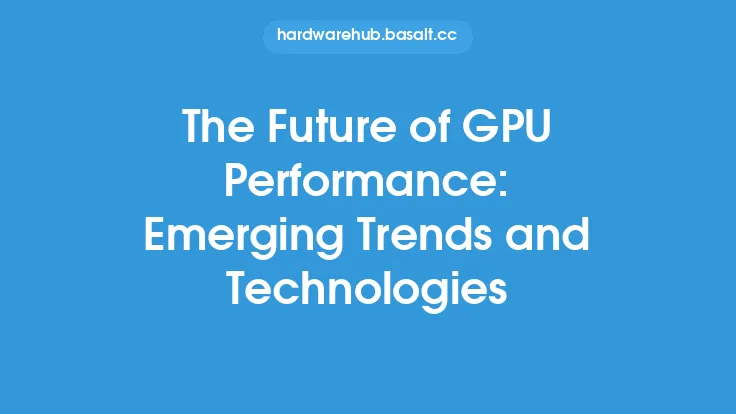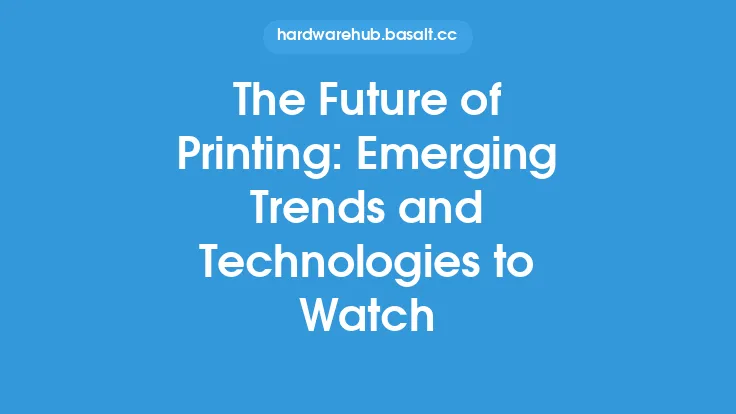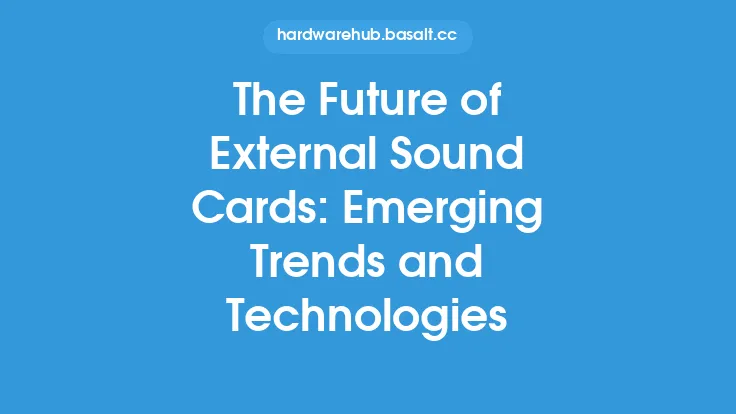The world of CPU integrated graphics is undergoing significant transformations, driven by advancements in technology, changing user demands, and the relentless pursuit of innovation. As the computing landscape continues to evolve, integrated graphics processing units (iGPUs) are becoming increasingly important, offering a balance between performance, power efficiency, and cost-effectiveness. In this article, we will delve into the trends and developments shaping the future of CPU integrated graphics, exploring the key drivers, technologies, and implications for the industry and users alike.
Current State of CPU Integrated Graphics
CPU integrated graphics have come a long way since their inception, with modern iGPUs offering substantial performance improvements over their predecessors. The current generation of iGPUs, such as those found in Intel's Core series and AMD's Ryzen series, boast enhanced graphics processing capabilities, support for advanced graphics technologies like DirectX and Vulkan, and improved power management. These advancements have made integrated graphics a viable option for a wide range of applications, from general computing and multimedia consumption to entry-level gaming and content creation.
Emerging Trends and Technologies
Several emerging trends and technologies are poised to further accelerate the development of CPU integrated graphics. One of the key drivers is the increasing adoption of heterogeneous system architectures (HSAs), which enable the integration of multiple processing units, including CPUs, GPUs, and digital signal processors (DSPs), onto a single chip. HSAs facilitate more efficient data transfer, reduced latency, and improved overall system performance, making them an attractive solution for integrated graphics. Another significant trend is the growing importance of artificial intelligence (AI) and machine learning (ML) workloads, which are driving the development of specialized processing units, such as neural network processors (NNPs) and tensor processing units (TPUs). These specialized units can be integrated into iGPUs, enabling enhanced AI and ML capabilities, such as accelerated video encoding, image recognition, and natural language processing.
Advances in Manufacturing and Architecture
Advances in manufacturing technologies, such as the transition to 5nm and 3nm process nodes, are enabling the creation of more complex, powerful, and power-efficient iGPUs. The increased transistor density and reduced power consumption afforded by these new process nodes are allowing for the integration of more sophisticated graphics processing cores, improved memory interfaces, and enhanced power management capabilities. Additionally, architectural innovations, such as the adoption of tile-based rendering and ray tracing, are being explored to further improve the performance and efficiency of iGPUs. These advancements will enable iGPUs to handle more demanding workloads, such as 4K video playback, virtual reality (VR) and augmented reality (AR) applications, and complex scientific simulations.
Software and Driver Developments
The software and driver ecosystem surrounding CPU integrated graphics is also undergoing significant changes. The development of more sophisticated drivers, such as those utilizing machine learning-based optimization techniques, is enabling better performance, power efficiency, and compatibility with a wide range of applications. Furthermore, the growing adoption of open-source drivers and software development kits (SDKs) is fostering a more collaborative and community-driven approach to iGPU development, allowing for faster bug fixes, improved security, and enhanced customization options. The increasing importance of software and driver developments is also driving the creation of more specialized tools and frameworks, such as those focused on AI and ML workload optimization, which will play a critical role in unlocking the full potential of iGPUs.
Power Efficiency and Thermal Management
As iGPUs continue to increase in performance and complexity, power efficiency and thermal management are becoming increasingly important considerations. The development of more advanced power management techniques, such as dynamic voltage and frequency scaling (DVFS) and clock gating, is enabling iGPUs to operate within tighter power budgets while minimizing thermal output. Additionally, the adoption of new materials and manufacturing techniques, such as 3D stacked processors and phase change materials, is allowing for more efficient heat dissipation and reduced thermal resistance. These advancements will enable the creation of more powerful, efficient, and compact iGPUs, suitable for a wide range of applications, from ultra-mobile devices to high-performance desktop systems.
Conclusion and Future Outlook
The future of CPU integrated graphics is poised for significant growth and innovation, driven by emerging trends, technologies, and advancements in manufacturing, architecture, software, and power efficiency. As iGPUs continue to evolve, they will play an increasingly important role in enabling a wide range of applications, from general computing and multimedia consumption to AI, ML, and VR/AR workloads. The development of more sophisticated iGPUs will also drive the creation of new use cases, such as edge AI, autonomous vehicles, and smart cities, which will rely on the unique combination of performance, power efficiency, and cost-effectiveness offered by integrated graphics. As the industry continues to push the boundaries of what is possible with iGPUs, users can expect to see significant improvements in performance, efficiency, and overall computing experience, making CPU integrated graphics an exciting and rapidly evolving field to watch.





